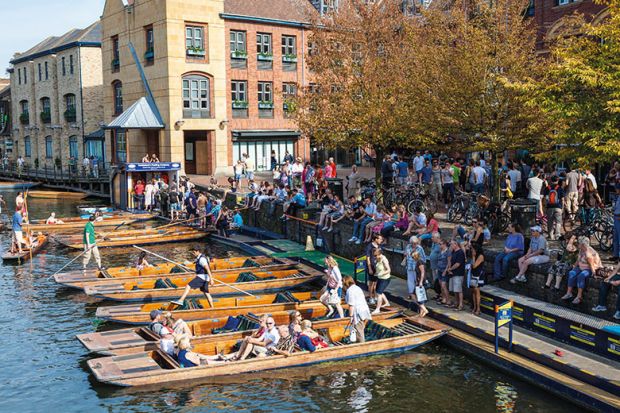With state school intakes at the universities of Oxford and Cambridge now at about 70 per cent, the heated national debate about “Oxbridge elitism” has cooled a little in recent years.
Scratch the surface of this apparent social mobility success story, however, and a slightly different picture emerges: at Cambridge, just 1,986 UK state school pupils were admitted in 2022, of which about a third (642) came from grammar schools, up from 1,524 in 2012 – only 462 more than in 2012. At Oxford, 1,678 state school pupils were admitted this year, up from 1,463 a decade earlier, but 13 per cent fewer than in 2020 because of declining overall admissions. Put simply, Britain’s two richest universities have collectively mustered fewer than 700 additional spots for state school pupils in a decade when some top UK universities have doubled their intake.
Such modest absolute increases in state school entrants – or in Oxford’s case, lower admissions – highlights the refusal of many colleges to expand domestic intakes, with institutions tending to admit more postgraduate or international students. The high price of the Oxbridge tutorial system – thought to cost at least £16,000 per student – has been cited as a major barrier to student expansion, as is the availability of in-hall accommodation for first-year undergraduates.
But the dramatic growth of one of Cambridge’s less historic colleges suggests expansion of opportunity is possible. This year’s undergraduate intake at Lucy Cavendish College was 34 per cent higher than in 2021-22, pushing overall student numbers to 850, roughly double the number four years ago when the college, a postgraduate college for mature women, announced it would admit men and women from the age of 18. The college, which became co-educational in 2021, intends to grow to about 1,000 – a number surpassed by only five of Cambridge’s 31 colleges.
This year it also became the first Cambridge college to admit more than 90 per cent of undergraduates from state schools – a landmark moment in some eyes, given its 92 per cent state school intake reflects the country’s school population (8 per cent of children are privately educated at GCSE level). That achievement eclipsed the levels seen this year at Mansfield College, Oxford, which has historically been Oxbridge’s most socially diverse institution. It compares with the 72 per cent state school intake across Cambridge, with the figure standing at 68 per cent at Oxford, up from the low-50s at both universities in 2000.
“It’s good that Lucy Cavendish can expand and do something different – we’ve identified a way that works for us given our DNA of opening up university education to historically under-represented groups,” explained its president, Dame Madeleine Atkins, referring to the college’s founding mission to help women excluded from higher education.
“We do not just cherry-pick from grammars or highly selective sixth forms either,” continued Dame Madeleine, former chief executive of the Higher Education Funding Council for England. “We’re working with schools across the country in areas of relative poverty – we’ve worked with 10 schools in Liverpool, four in Newcastle and four in south Wales, and a quarter of our entrants are first in family to go to university.”
Under the Lucy Cavendish scheme, sixth-form students with high potential are given fortnightly assignments with the aim of improving their A-level results, explained Dame Madeleine. “The point of the programme is academic attainment-raising – these students are getting three A*s for STEM subjects, and A*A*A in other subjects, and getting double the rate of offer that you see at Cambridge – about 40 per cent compared to a 17 per cent average,” she added.
Bringing the offer rate down from less than one in five to almost 50-50 is important, many experts believe, because schools that might typically have one or two Oxbridge candidates a year often disengage with outreach schemes if their best students are continually knocked back.
“It’s been hard to find these very high-quality applicants from these backgrounds and then encourage them to engage with us – it means developing a bespoke scheme around the lifestyle of these sixth-formers,” reflected Dame Madeleine, who said other Cambridge colleges had enquired about how the scheme could be replicated more broadly at the university.
This year Cambridge began its first pre-degree foundation year – pioneered at Lady Margaret Hall, Oxford in 2016 – with Lucy Cavendish admitting five students via the programme. Nonetheless, Dame Madeleine stood by her college’s emphasis on keeping entry levels high while providing additional support for talented sixth-formers. “We are making really tough offers – we want students to come in the front door with their head high, not through a side door marked ‘widening participation’,” she said.
Given the relatively low undergraduate numbers at Oxford and Cambridge, the capacity of the state school pupils to drive social mobility attending these institutions may be less important than their cultural symbolism. But Lucy Cavendish has shown that admitting many more state school entrants – while maintaining high entry standards – is not perhaps the fanciful notion that some Oxbridge dons have suggested.




